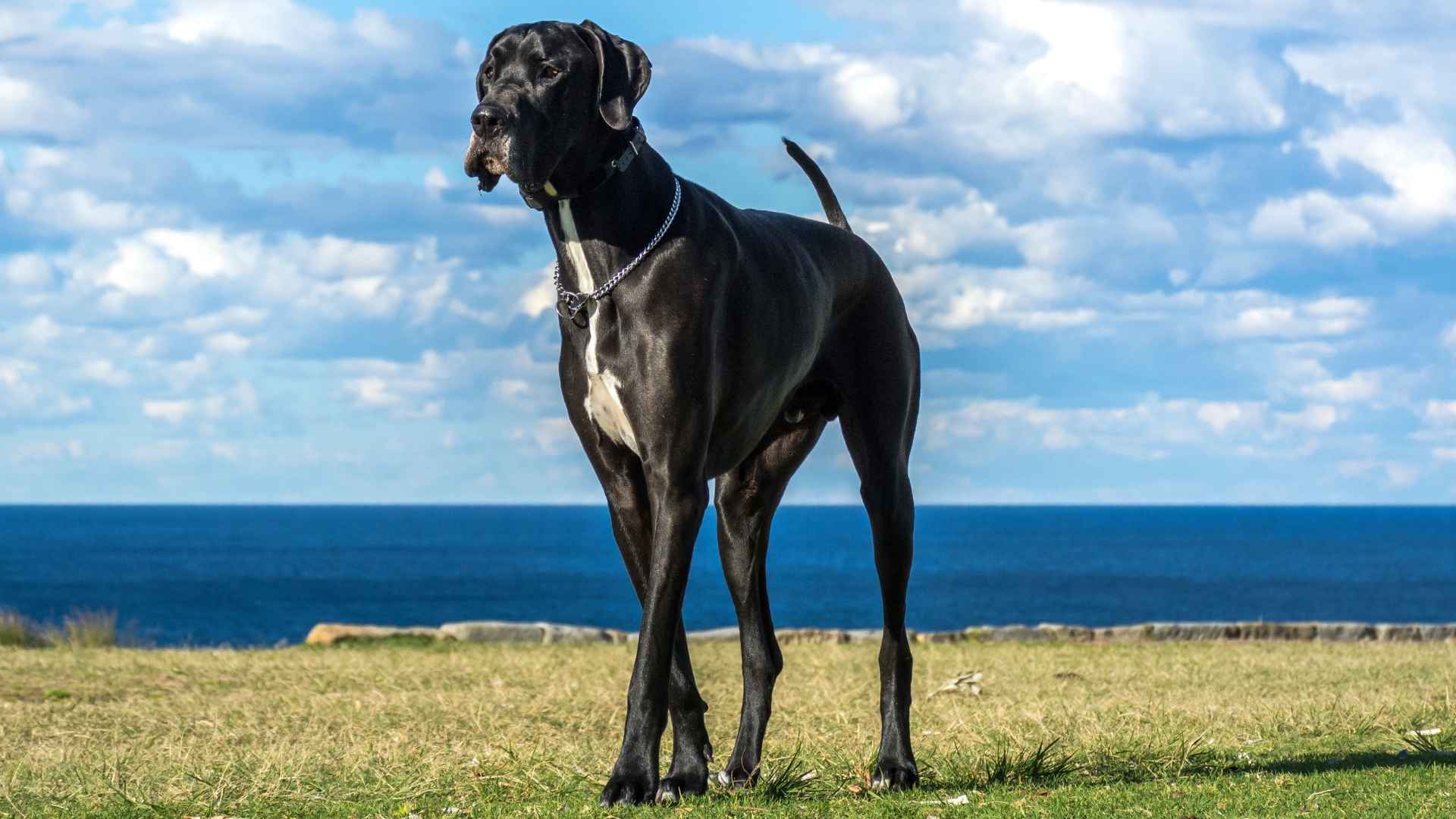Bringing a new puppy home is an exciting milestone, but what many new dog owners don’t anticipate is just how fast that adorable little bundle can grow. Some breeds experience an explosive growth spurt, transforming from pint-sized pups to towering companions in what feels like the blink of an eye. For families living in smaller homes or apartments, choosing a breed without considering its rapid development can lead to a challenging mismatch of space and size.
While all dogs go through growth stages, certain breeds are known for reaching their full size unusually quickly. What begins as a manageable, cuddly pup might soon be knocking things off tables with an enthusiastic tail or struggling to stretch out in a too-small dog bed. It’s crucial to think beyond those floppy ears and puppy-dog eyes and consider the long-term size and lifestyle needs of your future companion.
In this article, we explore dog breeds that grow at lightning speed, those that may surprise you with just how much dog you’re getting, and how quickly they get there.
Dog Breeds With Unusually Fast Growth
1. Great Dane
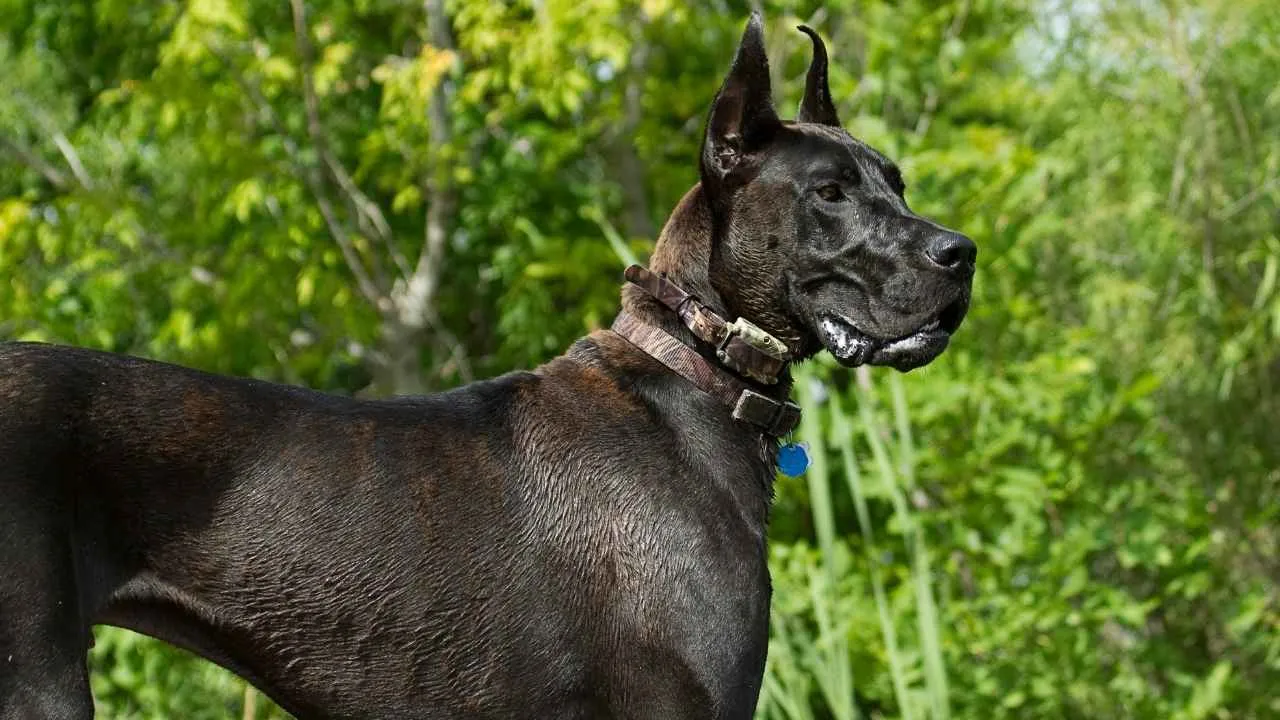
Great Danes are the definition of rapid growth in the canine world. Nicknamed the “Apollo of dogs,” these gentle giants can go from tiny puppies to towering figures in what feels like no time at all.
Great Danes are recognized for their impressive size, typically standing between 28 and 32 inches tall. The tallest known Great Dane, named Zeus, reached a height of 41 inches and measured more than 7 feet when on his hind legs, as per PetMD.

Weighing between 110 and 175 pounds at maturity, they reach full height by 1.5 to 2 years of age, but most of their vertical growth happens within the first year. In fact, the Great Dane Club of America notes that a Dane puppy grows as much in one year as a child does in fourteen.
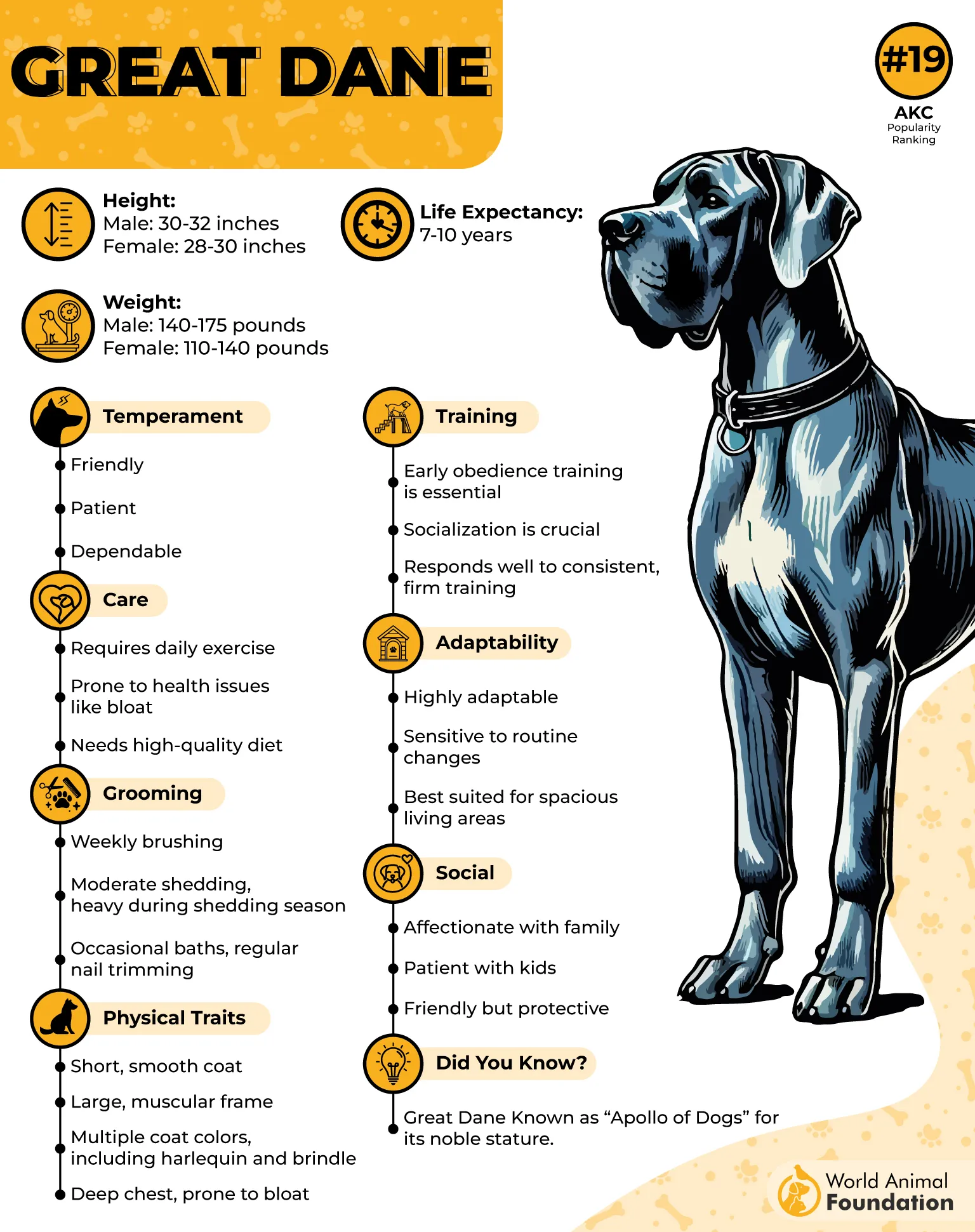
Health
Such fast development comes with health considerations. Their accelerated growth places strain on their joints and bones, increasing the risk of hip dysplasia, osteochondritis, and other orthopedic conditions.
Feeding a balanced large-breed puppy diet is essential to help regulate bone growth and reduce the risk of disorders like Wobbler syndrome and GDV (gastric dilatation volvulus), a life-threatening form of bloat. Overfeeding or pushing rapid growth can worsen these issues, so careful nutrition and regular vet visits are crucial.
Fun Fact: Despite their name, Great Danes have no connection to Denmark; they were originally bred in Germany to hunt wild boar and guard estates.
2. Mastiff Puppy
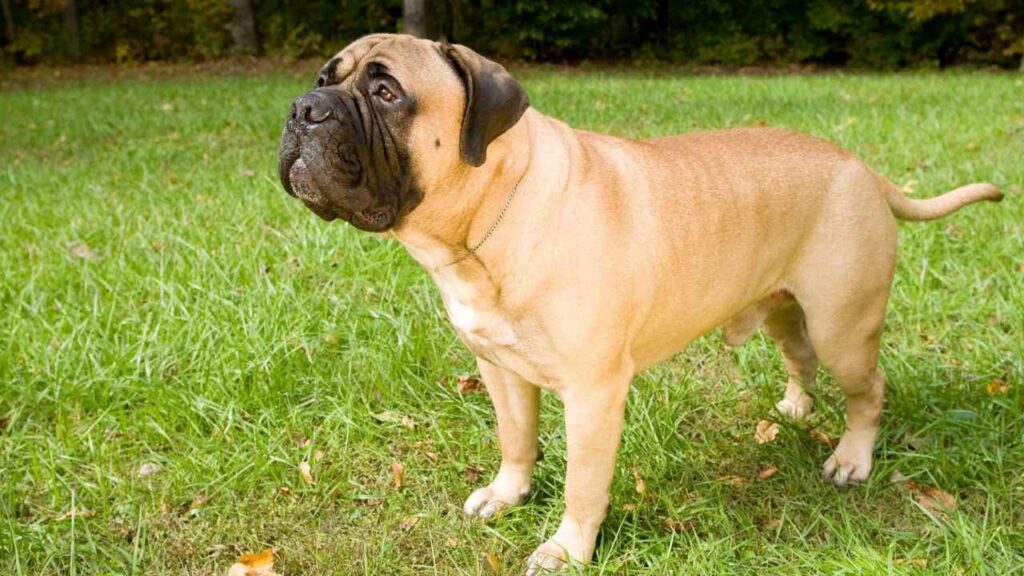
Mastiffs are a noble and gentle-natured dog. Even at a young age, their sheer size is unmistakable, they resemble miniature versions of the giants they’re destined to become, as per Hills Pet.
Male Mastiffs can grow to over 30 inches tall and weigh between 160 to 230 pounds, while females typically reach at least 27.5 inches and 120 to 170 pounds. Their growth during the first year is both impressive and intense, requiring owners to be attentive to their physical development and nutritional needs.
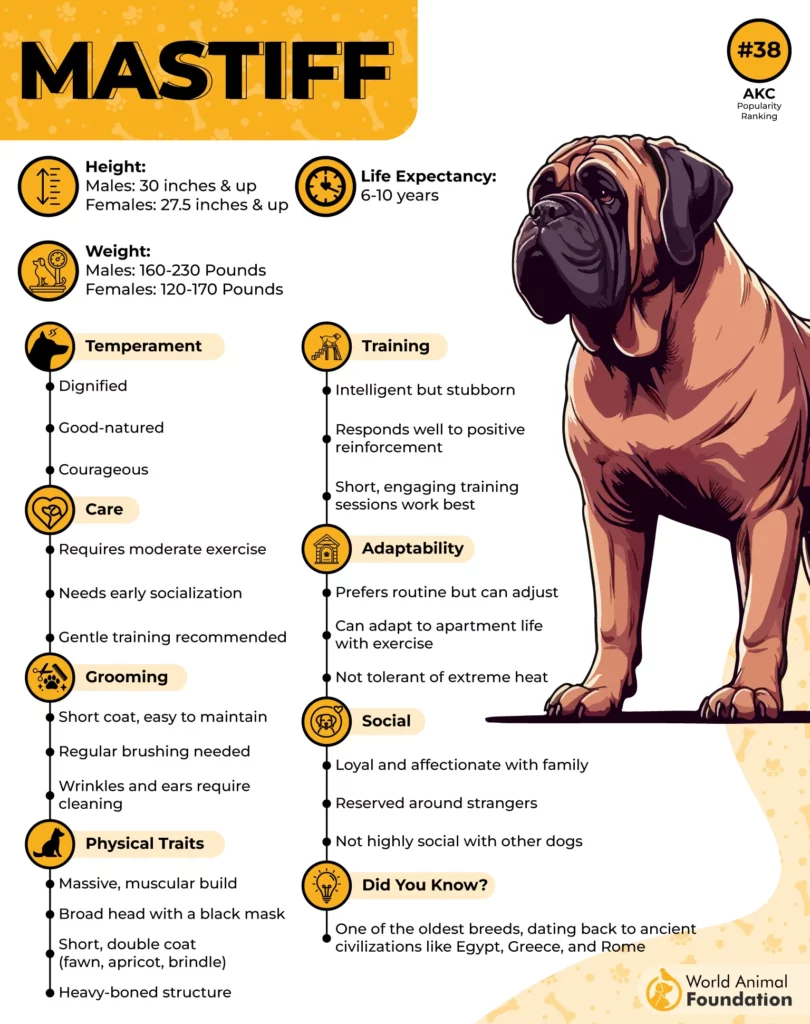
Health
Such fast growth demands thoughtful care. Because Mastiffs are prone to joint and skeletal issues, nutrition is critical during puppyhood. Many breeders and experts recommend a complete raw, meat-based diet, which has been linked to lower risks of certain developmental conditions in large-breed dogs.
Monitoring weight and size against growth charts helps prevent overfeeding, which could lead to stress on growing bones and muscles. A proper diet not only fuels their rapid size increase but also supports their transition into healthy, balanced adults.
Fun Fact: Mastiffs were originally bred in Britain and spread throughout Europe by the Roman Empire, evolving over time from fierce guardians into today’s gentle giants.
3. Saint Bernard
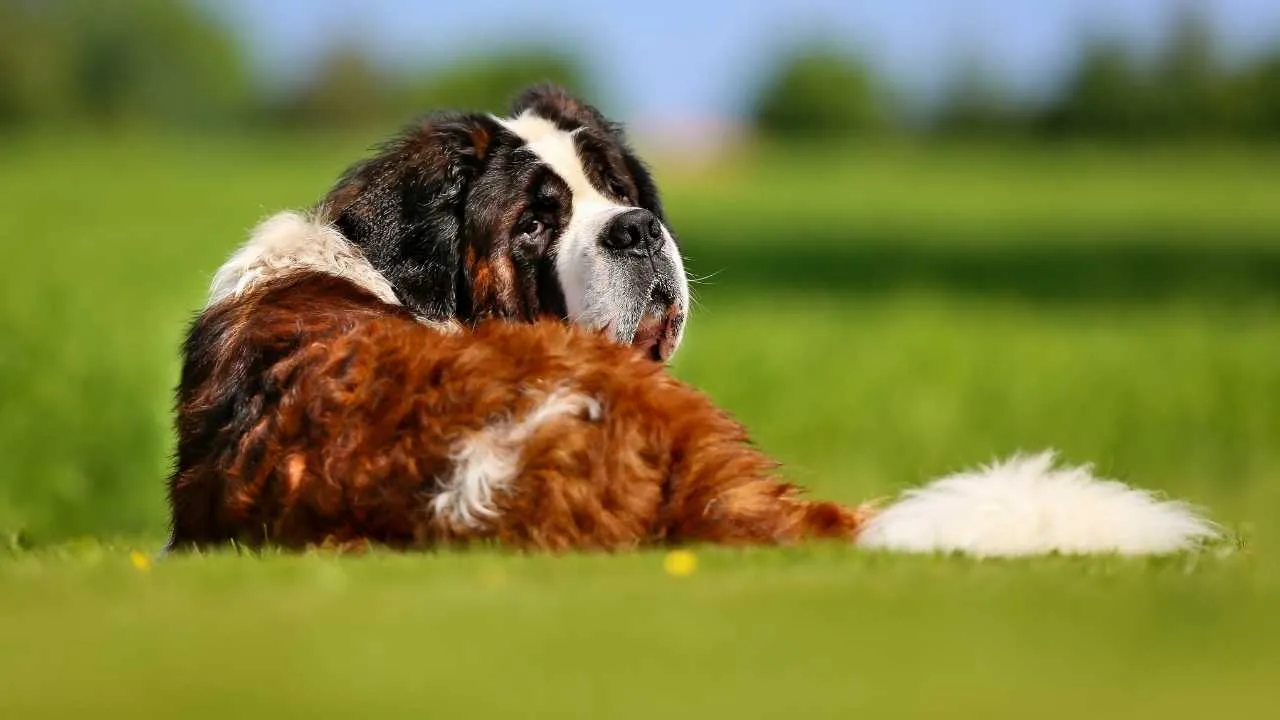
The Saint Bernard is a massive, gentle breed famous for its Alpine rescue roots, but behind its calm demeanor is one of the fastest-growing breeds in the canine world. According to the AKC, the Saint Bernard is known for being fun-loving, endearing, and curious.
These dogs can weigh 120 to 200 pounds and stand up to 30 inches tall, with most of their dramatic size increase occurring in the first year.
Puppies often experience an intense growth spurt between one and twelve months, reaching near-adult size by their first birthday. Muscle development and final weight continue through the second year, particularly in the chest and legs.
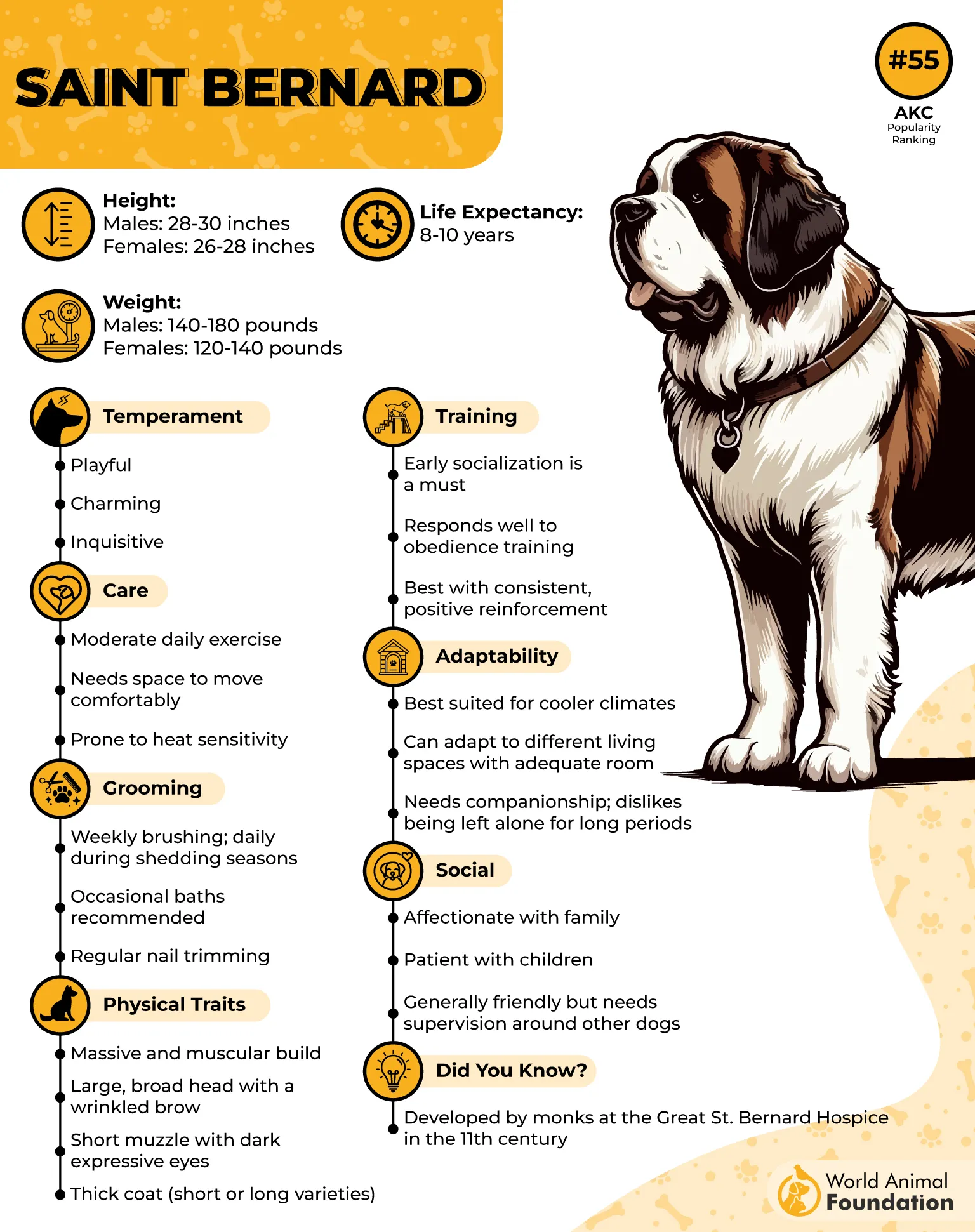
Health
Rapid growth in Saint Bernards puts immense pressure on developing bones and joints, making careful feeding and controlled exercise vital. Overfeeding during this period can lead to orthopedic issues such as hip dysplasia and worsen the risk of joint stress.
Additionally, Saints are prone to bloat, a potentially fatal condition common in deep-chested breeds. Owners should also monitor for eye diseases and consult a vet for tailored nutrition plans. Managing their weight and activity early on supports healthier long-term development.
Fun Fact: Saint Bernards were bred by Swiss monks to rescue travelers trapped in snow, using their keen sense of smell to locate people buried deep beneath avalanches.
4. Newfoundland
Newfoundlands are known to have exceptionally pleasant personalities; they are calm, gentle, affectionate, loyal, and tolerant, as per Purina. By just one month old, they weigh around 10 pounds, and by their first birthday, males often tip the scale at 120 pounds or more, with females not far behind.
That’s an average weight gain of roughly 10 pounds per month in their first year, making them one of the fastest-growing dog breeds. Despite their size, these dogs are gentle, affectionate, and famously great with children, as immortalized by the character “Nana” in Peter Pan.
Health
Rapid growth in Newfoundland comes with a high risk of skeletal issues. Conditions like hip and elbow dysplasia, panosteitis, and osteochondritis dissecans are common if their development isn’t properly supported.
Feeding large-breed puppy food and avoiding overfeeding are critical to managing their joint health. They are also prone to gastric dilatation volvulus (bloat), dilated cardiomyopathy, and hereditary conditions like cystinuria.
Additionally, excessive skin around the eyes can cause entropion or ectropion, which may require veterinary attention. Due to their thick, water-resistant double coat, they also need consistent grooming to prevent matting.
Fun Fact: Despite often weighing over 150 pounds, many Newfoundlands still believe they’re lap dogs and will gladly snuggle on top of you.
5. Bernese Mountain Dog
The Bernese Mountain Dog is a gentle giant known for its affectionate nature and impressive size. According to Britannica, the Bernese Mountain Dog is a working breed that was brought to Switzerland by Roman invaders over 2,000 years ago.
Reaching heights of 23 to 27.5 inches and weighing between 70 and 115 pounds, these dogs grow rapidly during their puppy months. This speedy development, while natural for the breed, means they can go from floppy-eared pups to towering companions in a surprisingly short amount of time.
Their size alone makes them a standout among fast-growing breeds, but their calm, sweet temperament adds balance to their overwhelming physical presence.
Health
As with many large and giant breeds, the Bernese Mountain Dog’s accelerated growth rate requires careful management. If their bones develop too quickly without enough muscular support, they may become prone to joint issues like hip and elbow dysplasia.
These conditions can lead to long-term pain, limping, and difficulty moving. A balanced diet formulated for large-breed puppies, rich in the right mix of fats, proteins, and carbohydrates, is essential to support healthy development.
Regular veterinary guidance ensures their growth stays on track and helps minimize risks associated with rapid weight gain and joint strain.
Fun Fact: Though they may look imposing, these big dogs are among the more low-energy giant breeds, often described as playful, patient, and friendly to all.
6. German Shepherd
The German Shepherd is not only renowned for its intelligence and versatility, but also for its impressively fast development during puppyhood. Males typically reach full adult height and most of their body mass between 18 to 24 months, with some continuing to fill out until age three.
From just two to five months old, they experience major growth spurts. By six months, a male may already weigh around 53 pounds. This rapid transformation from puppy to powerful adult highlights just how quickly these noble dogs mature.
Health
With such accelerated growth, it’s no surprise that German Shepherds face certain health problems tied to their development. Their bones and joints bear a lot of stress during these periods, which can increase their susceptibility to conditions like hip dysplasia and joint instability.
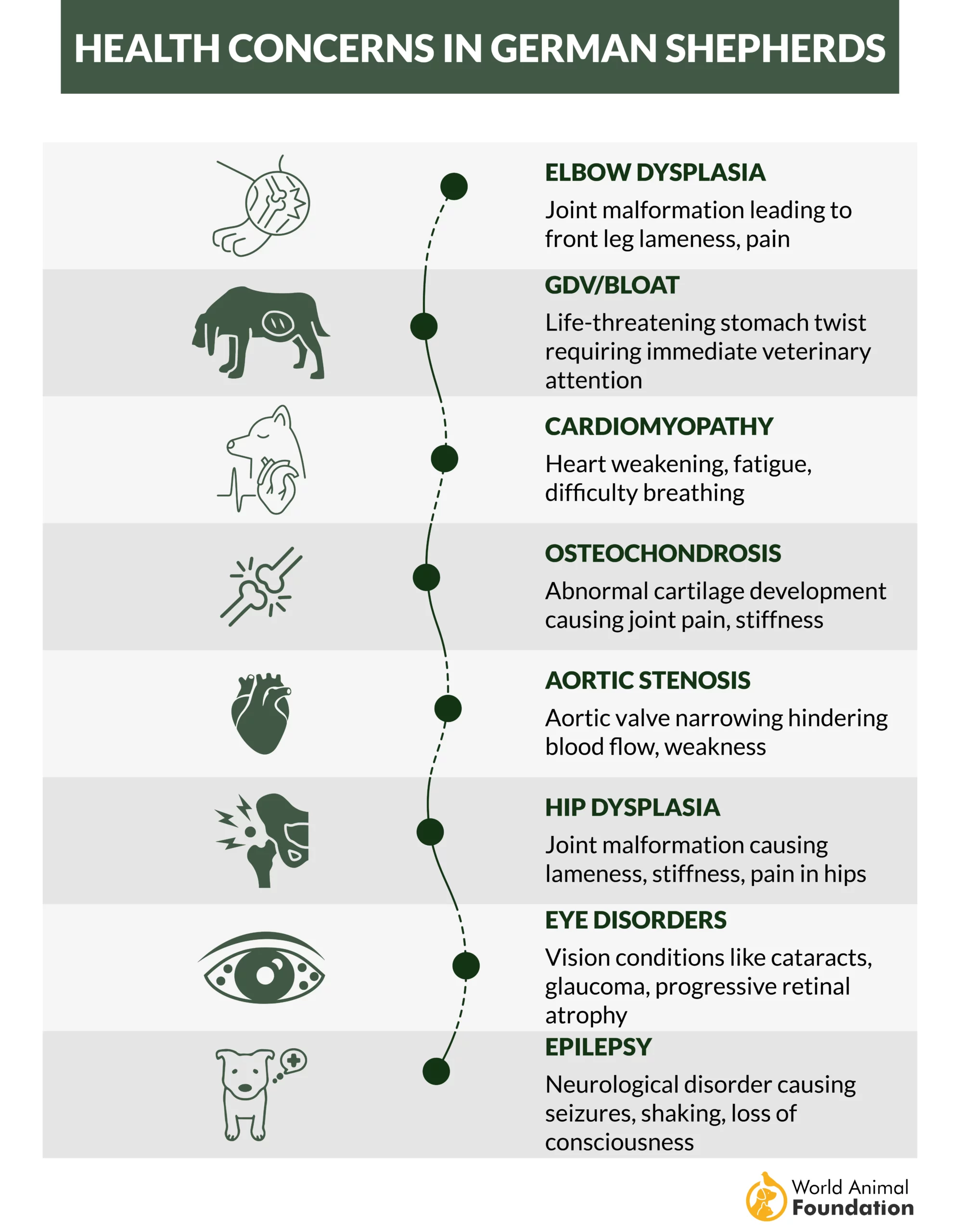
Managing weight and providing proper nutrition, especially during the first two years, is essential to avoid growth-related orthopedic issues. Regular vet checkups are key to catching early signs of imbalance or excessive weight gain, which can lead to obesity or long-term joint damage.
Fun Fact: German Shepherds are known for their loyalty and courage, and are often described as the finest all-purpose working dog in the world.
7. Labrador Retriever
Labradors typically reach their full height by around 12 months of age, though they often continue to gain muscle mass and body weight until they are 18 months old.
This rapid development can catch new owners off guard, especially when their once-small puppy quickly transforms into a powerful, energetic adult dog within a year.
Health
Because Labradors grow so quickly, managing their nutrition and exercise is vital during puppyhood. Feeding them a high-quality, large-breed puppy formula provides the necessary calories and nutrients to support healthy bone and muscle development without promoting overly rapid growth.
Without proper diet and controlled physical activity, Labrador Retrievers may be more susceptible to joint issues, especially hip and elbow dysplasia. Genetics, spay/neuter timing, and overall health can also influence growth patterns, making routine vet checkups a key part of their care.
Fun Fact: The Labrador Retriever originally worked alongside fishermen, retrieving nets and hauling lines, which may explain their love for water and athleticism today.
8. Golden Retriever
Golden Retrievers are beloved for their friendly demeanor and intelligence. These medium-to-large dogs grow remarkably fast, especially in their first six months. Between 3 and 6 months of age, many owners report visible changes in size almost daily.
By the time a Golden Retriever puppy hits four months, they typically reach half their adult height, and by six months, they’re often two-thirds of their final weight. Most Goldens achieve their full height by one year, though they may continue to fill out until around 18 months.
Health
Because of their swift growth, Golden Retriever puppies must be monitored closely to ensure healthy development. Growth spurts can place stress on bones and joints, potentially leading to issues like hip dysplasia if not managed carefully.
A balanced diet and regular vet checkups are essential to prevent excessive weight gain and support steady musculoskeletal development. Each puppy grows at their own pace, so individual growth variations are common, but extreme deviations should be discussed with a veterinarian.
Fun Fact: The Golden Retriever was originally bred in 19th-century Scotland as a gundog to retrieve game birds and is now one of America’s most popular family dogs.
9. Doberman Pinscher
Doberman Pinschers grow with remarkable speed, especially in their first year of life. These regal, athletic dogs can double their birth weight within the first week and continue adding several pounds per week during their early months.
Between 3 and 6 months, their rapid development is especially noticeable, long legs and a slim frame give them a lanky appearance until they start filling out with muscle. By 1.5 to 2 years of age, most Dobermans reach their full height and develop their signature muscular, streamlined physique.
Health
Because Dobermans grow so quickly, it’s essential to support their development with proper nutrition, balanced exercise, and regular veterinary care.
Rapid bone and joint growth can lead to orthopedic issues if not managed carefully, so feeding them a high-quality, giant breed pup diet and avoiding strenuous activity during key growth phases is important.
Monitoring calorie intake is also crucial once their growth slows around the one-year mark to prevent excessive weight gain, which can strain joints and internal organs.
Fun Fact: Despite their sleek appearance, Dobermans are born with tails and dewclaws, which are often removed early in life, depending on the breeder and owner’s preference.
10. Cane Corso
The Cane Corso is a commanding Italian mastiff breed known for its immense strength. Starting life at just 1 to 2 pounds, these puppies can balloon to 20 pounds within eight weeks and grow to 100 pounds or more by their first birthday.
With males sometimes reaching up to 175 pounds, and some even tipping the scale at 250, the Cane Corso’s growth trajectory is nothing short of dramatic. Their swift physical transformation makes early training essential, as their sheer power can become overwhelming without proper guidance.
Health
With such rapid growth comes a heightened responsibility for pet owners to protect their developing joints and bones. Nutrition plays a vital role during their first 18 months, when most of their bone growth occurs.
A balanced diet and limited forced exercise during this stage help reduce the risk of orthopedic issues. Common health concerns include hip dysplasia and joint stress, particularly if their diet lacks the necessary nutrients or if overexertion occurs too early. Regular vet checkups and structured socialization can ensure a healthy, well-rounded adult Cane Corso.
Fun Fact: The heaviest Cane Corso on record reportedly weighed an astonishing 250 pounds, more than many adult humans.
Conclusion
Welcoming a new canine friend into your home comes with excitement and important decisions. For some breeds, rapid growth can quickly transform a tiny pup into a towering companion with an adult weight that surprises even experienced owners. Breeds like the Great Dane and Cane Corso grow so quickly that they may outpace your expectations in both size and strength. Without enough space or preparation, it’s easy to end up with too much dog for your living situation.
Unlike smaller breeds or many female dogs, these fast-growing giants demand thoughtful planning and commitment. While they can be just as affectionate and trainable as other dogs, their accelerated development means early training, proper nutrition, and structured routines are vital. Understanding a breed’s expected adult weight and growth timeline helps ensure a smooth transition from puppyhood to adulthood. With the right care, these quickly growing companions can become loyal, well-adjusted members of the family.


